
Hidden Topsham – Part One
‘If you walk’… This is the first part of a look at ‘Hidden Topsham’, and it’s a series of invitations for you to explore certain nooks and crannies of the town, both here through my post, or perhaps in person. One of the delights I’ve experienced from living in Topsham is the continual discovery of features and stories which are hidden from normal view, perhaps by the obscurity of their position, or their concealed history. Topsham is a town of unexpected twists and turns, as I’ll reveal later. But I’m going to start with two stories from the edge of the town.

The Mourne Lass
If you come from Darts Farm, just outside Topsham, and take the footpath a short way further towards the town on the left, it will take you through a little-known part of the Topsham area, passing some charming cottages, and then running along the back of Odhams Wharf and Tremletts Quay. Here, if you look towards the River Clyst, you’ll spy a dilapidated blue boat called ‘The Mourne Lass’. I had long wondered what her story was, and how she had got there, so I did some digging.

She has in fact a venerable history as one of the oldest fishing vessels in Brixham. It seems that she is probably about seventy years old; in an undated post, her owners in recent times ask for advice on restoring her, saying that ‘The ‘Lass’ is a an ex-MFV, which we are working on in an attempt to give her a new lease of life in her retirement. We need to replace the 60 year old deck, but we can’t afford (time and money) to do this for a few years.’

For a spell, she was berthed at Topsham Quay, but now appears to be slumbering in the waters and mud of the Clyst. In her glory days, she continued to sail in Brixham even after she was decommissioned, and to take part in the famous Brixham Trawler Race. Watch her overtaking the competition in this YouTube clip from 1993! (NB – if your device doesn’t show the correct clip, please refresh the page, as there was a slight glitch earlier)
Tryphena Gale (‘Thomas Hardy stood here’)
If you stroll to the back edge of the Topsham cemetery, you will find the memorial to Tryphena Gale, 1851-1890. Tryphena was the wife of Charles Gale, the landlord of the South Western Tavern in Fore St (now the Co-Op, and formerly Drakes Inn). But she was born Tryphena Sparks, and was the beloved of Thomas Hardy, one of England’s most famous writers. They were probably engaged for a while, though the evidence isn’t clear. She was also a relation of his – the usual version is ‘cousin’, but some sources hint that she may in fact have been a niece, which would have meant that any relationship would have been forbidden. In the photo below, Hardy is aged sixteen, and Tryphena looks to be in her twenties.


Both went on to marry other people, though Tryphena first trained as a teacher and became headmistress of the Plymouth Day School before her wedding to Charles Gale. The couple must have been comfortably off, as they ran an antiques business next door to their tavern, and also owned The Steam Packet pub (now Route Two Café).
Thomas remained close to his former love, and was apparently devastated by her early death, caused by childbirth just before her thirty-ninth birthday. In a poem to mark her passing, he refers to her as ‘my lost prize’, and laments that:
Not a line of her writing have I,
Not a thread of her hair,
No mark of her late time as dame in her dwelling, whereby
I may picture her there.
(Thoughts Of Phena – At News Of Her Death)


She had become a woman of the town. As ‘Exeter Memories’ records: ‘Tryphena was well known in Topsham for working to improve the lot of local fishermen – at her funeral, her coffin was carried by some local fishermen to the graveside. Sometime after the funeral, Hardy cycled to Topsham with his brother Henry and visited the grave – he left a note on the grave saying “In loving memory – Tom Hardy”. He was not given a warm welcome when he called on Charlie Gale to pay his respects’
If you stand by her grave, you may like to remember: ‘Thomas Hardy was here too.’
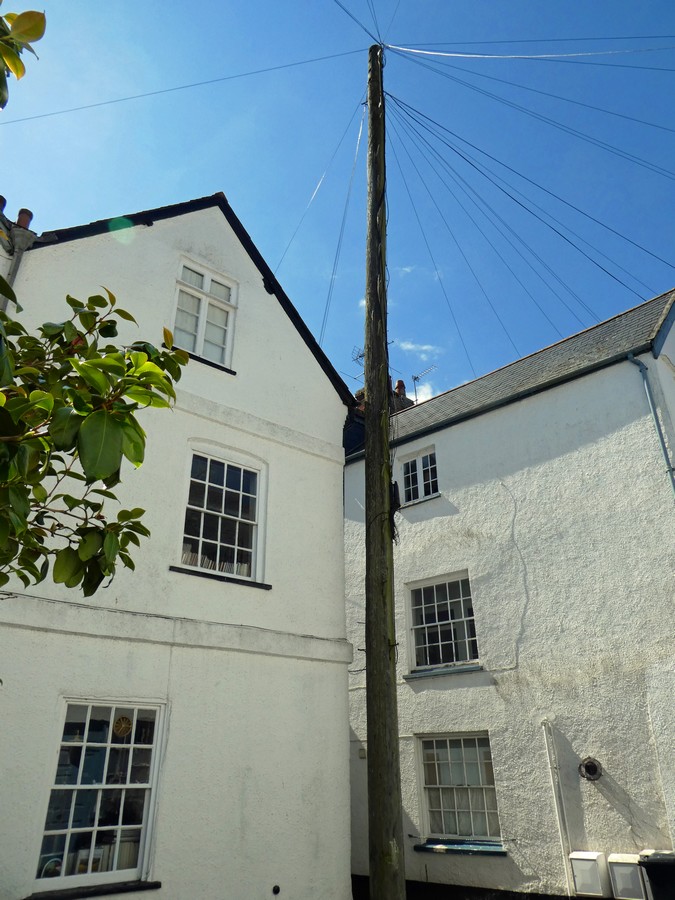
Twists and Turns
As a Topsham guide, I love to lead visitors into some of the little alleyways. Even locals aren’t always aware of their existence. If you enter the one known as Trees Court, which leads up the side of Lily Neal’s bookshop on Fore St, your sharp eyes might spot a date over the side door, and one of the various old pumps which are studded around the town, in the cobbled yard behind. But perhaps you wouldn’t immediately remark on the huge telegraph pole in the middle of this open yard, or realise that it’s a Grade Two listed monument. This was in fact the first telegraph pole in the town and through the little window seen on the bottom left, the post master or mistress used to deal with the business of sending telegrams from the town. No one is quite sure how they managed to bring such a tall pole into position, especially as it has an extra 8 meters sunk below ground!

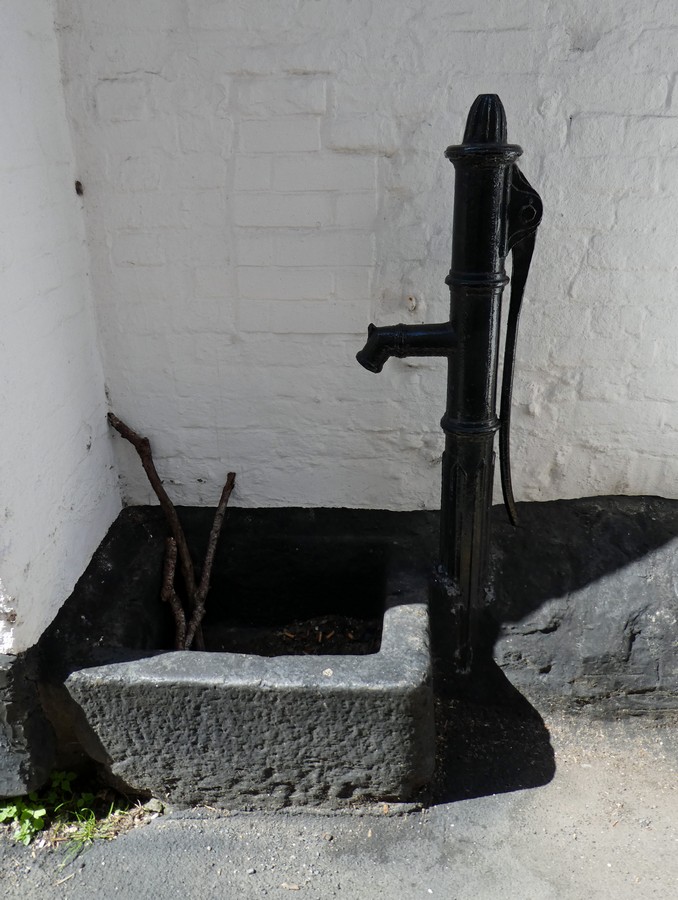


If you follow the alley further, you will see two spic and span examples of old workers cottages, with their privies across the yard.



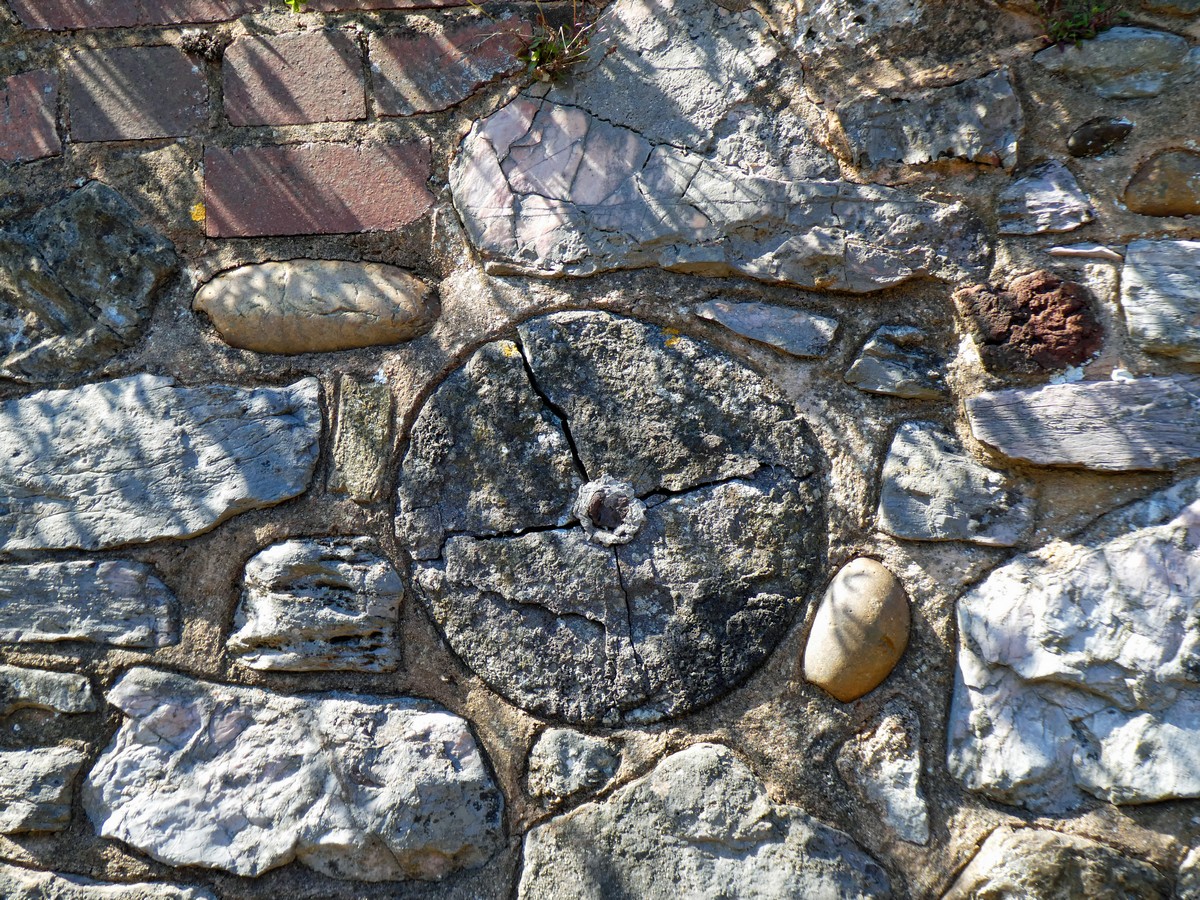
And then you come to what I call ‘the All and Everything’ wall on the lefthand side. If you look closely, you’ll see that it’s composed of Dartmoor granite, volcanic rock, Heavitree sandstone (frequently used in local buildings), and ‘buns’, the rounded boulders found on the Jurassic beaches of Budleigh Salterton and Sidmouth. Not to mention the old grindstone, as I assume it was. Topsham has always been a place of ‘make-do-and-mend’ which sometimes descends into ‘cobbled together’ tactics. When we renovated our house further down Fore St, although the original medieval walls were sturdy, the more recent bathroom wall turned out to be made of flimsy wooden packing cases! Times were hard in the town, when the fishing industry and market gardening declined in the late 19th and early 20th centuries.

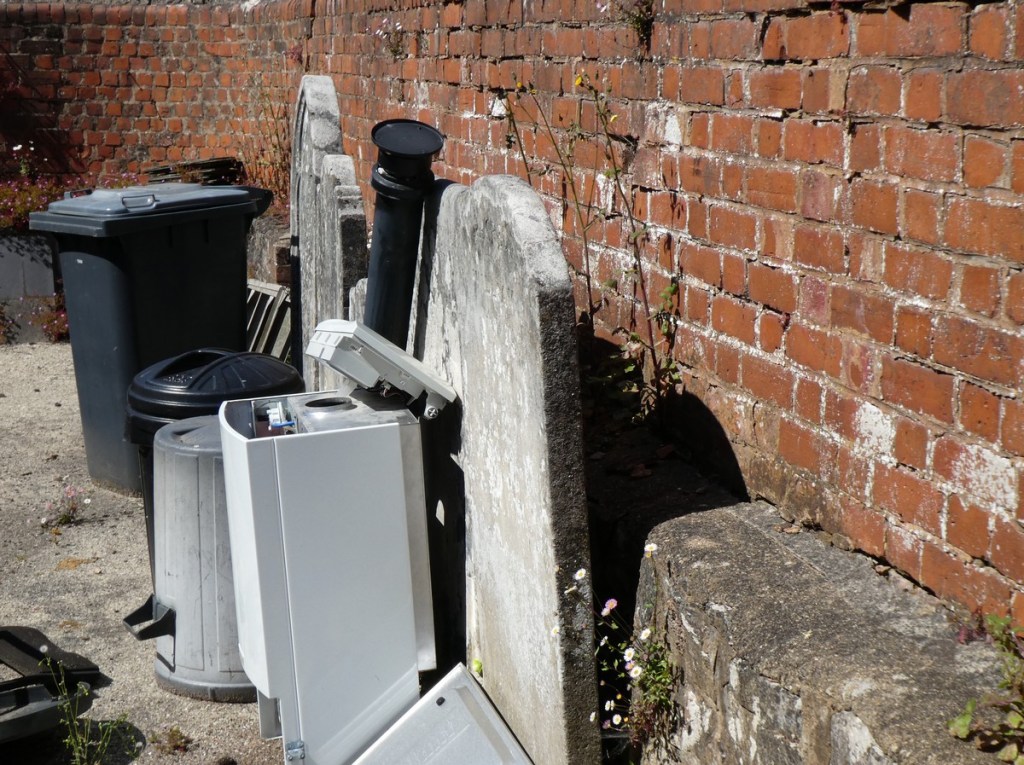
Finally, just as you emerge on Victoria St, if you peer over the tall wall on the left hand side belonging to the Masonic Hall, you might be surprised. Here, among the dustbins, are the old Dissenter graves, where members of non-Conformist sects were buried at their old chapel.

Glimpses
If you walk a little downhill from the place of entry to Trees Court, you will come across Chapel Place on the left hand side of the road. The cobbled path ends with a glimpse of a pleasant-looking, substantial house facing you. The house to the right however, which is even more tucked away, was once a chapel, and later the ‘Cosy Cinema’. Then it became a Glove Factory, as the old sign commemorates. A few years ago, I met a builder in Exeter who was the son of the last glove manufacturers there; he remembered coming home after school to sit among the employees sewing, and play with the scraps of material on the workroom floor.
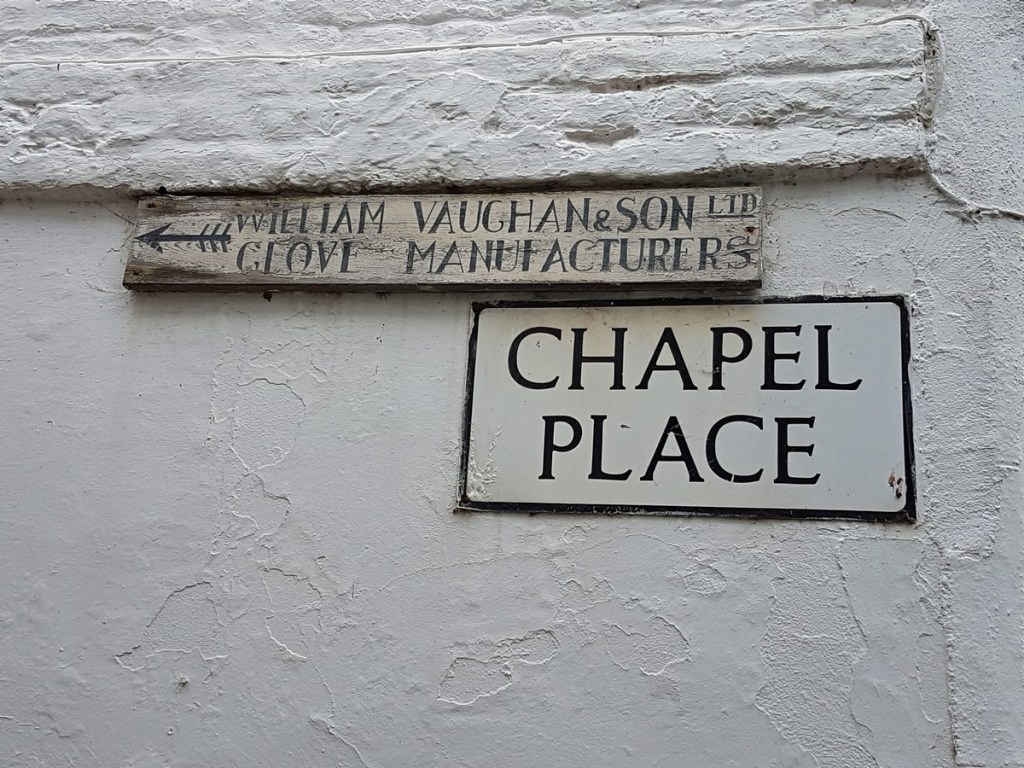

The Seven Stars
And if you look on the opposite side of the road, you will spy an almost hidden entrance to yet another passageway. Walk up here (it emerges in the churchyard), and see where the mysterious old sign of the Seven Stars Cider House still hangs. What is its story? The author of the excellent Topsham Inns does not know. But someone else has plumbed its secrets. Ray Girvan gives a fascinating – if tongue-in-cheek – account in his own blog ‘Ray’s Secret Topsham’.

Here’s what Ray has to say:
‘The churchyard of St Margaret’s has an intriguing feature, the Hamilton Tomb. This is the tomb of Alexander Edward (‘Ned’) Kelso Hamilton, the young archaeologist on whom Bram Stoker based the hero of his story, The Jewel of the Seven Stars [an archaeological horror story about Egyptian mummies]. Stoker’s title was inspired by the Seven Stars Cider House which can be seen in the small close at the other side of the churchyard (the same location was used in the filming of Cider House Rules).
OK, perhaps this might be stretching a point? But to end the first part of my ‘Hidden Topsham’ posts, I’d like to offer Ray’s solution to another mystery. If you listen to people talking around the town, why is it that some say Tops-ham, and others Top-sham? This has long been a contentious issue in the town, and no one seems to have a definitive or convincing answer. Once again, Ray puts us to rights, speaking first of the King’s Beam, which I featured in my post ‘The Tidal Town of Topsham’:
‘In the late 19th to early 20th century, a stylised depiction of the beam was used as a religious symbol by the Topsamite Reformed Brethren, a non-conformist sect who preached that Joseph of Arimathea had visited Topsham with the young Jesus. The sect is still technically banned by an emergency law passed in 1915 when its leader spoke out in favour of the Kaiser, but it still exists and members can be identified by their secret pronunciation of the town’s name as “Topsam”. It’s of related interest that Oscar Wilde stayed incognito at the quay, “posing as a Topsamite”, before sailing to exile in France.’
So, are you a member of this secret sect?
Next time, I plan to take you up the once wicked White Street, into some Secret Gardens, and to follow in the Queen’s footsteps, among other delights of Hidden Topsham. ‘If you want to…’ of course.
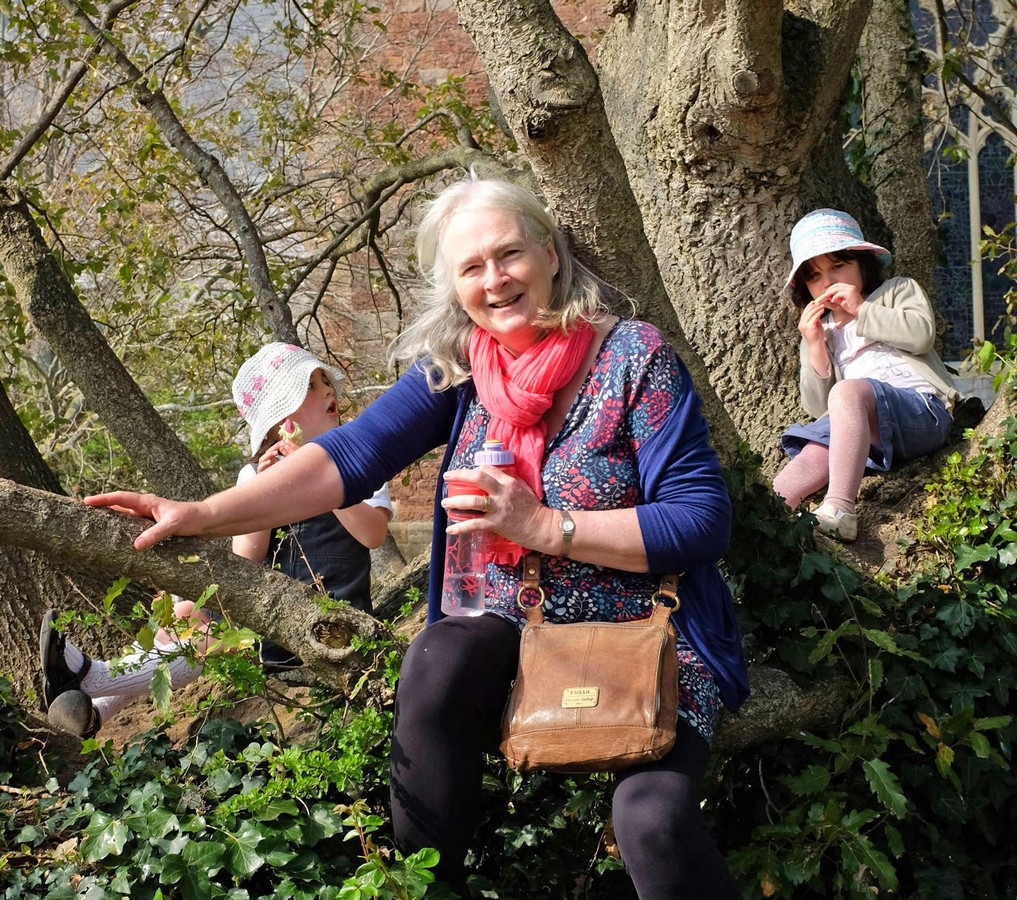
To finish with, here are a few Topsham Fancies – these are the kind of things you may spot if you let your eye wander to the rooftops, the walls, and the porches of the houses of Topsham.


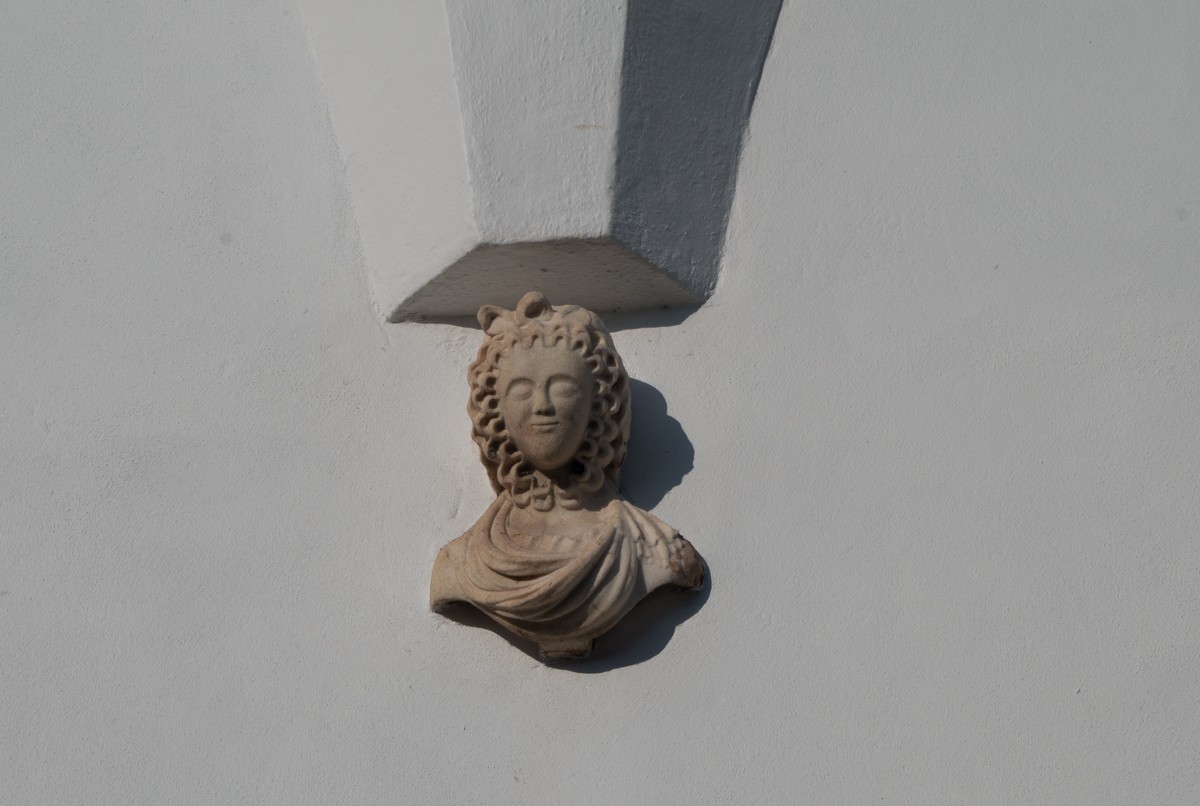
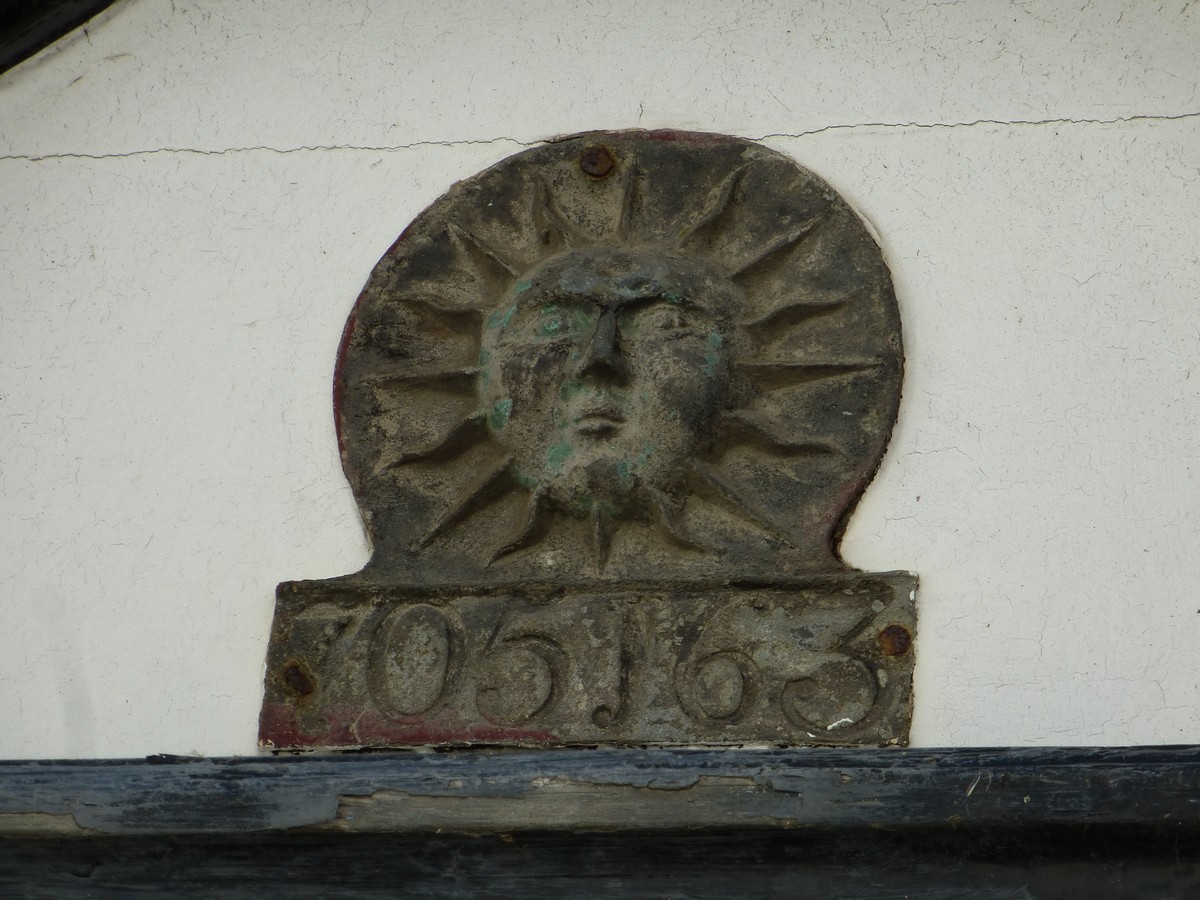

References
Topsham Inns Past and Present, Colin Piper (Topsham Museum 2010)
Secret Topsham, a blog by the late Ray Girvan at jsbookreader.blogspot.com/2014/04/secret-topsham.html
The Story of the Manor and Port of Topsham, D. M. Bradbeer, (Town & Country Press 1968)
Topsham Past and Present, Chips Barber, (Obelisk, 2004)
Topsham: An Account of its Streets and Buildings, Caroline Obussier (Chevron Press, 1986 revised edition)
Previous blogs you may also be interested in – The Tidal Town of Topsham
Related books by Cherry Gilchrist


These titles were written for schools use. Although they are not directly related to Topsham, they paint a picture of social history and life in Britain from World War One up to World War Two. See also: People at Work 1930s-1980s and Shops by Cherry Gilchrist, also published by Batsford Educational.
